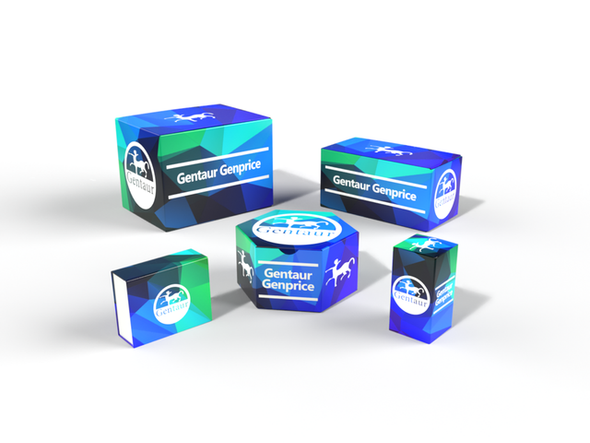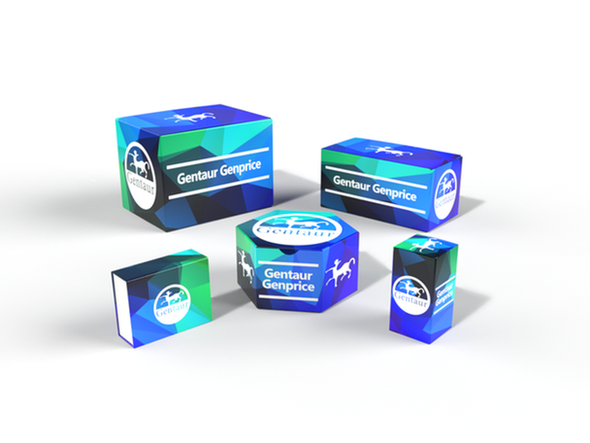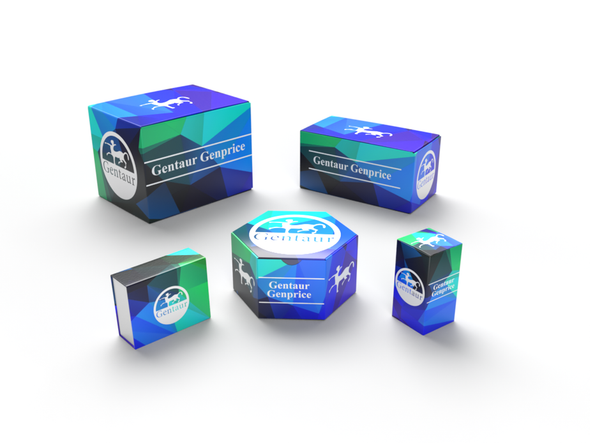740
Rat C-X-C motif chemokine 9 (CXCL9) ELISA Kit | AE63289RA
- SKU:
- 740-AE63289RA
- Availability:
- Usually ships in 5 working days
Description
Rat C-X-C motif chemokine 9 (CXCL9) ELISA Kit | AE63289RA | Gentaur UK, US & Europe Distribution
Species Reactivity: Rat (Rattus norvegicus)
Abbreviation: CXCL9
Alternative Name: CMK; Humig; MIG; SCYB9; crg-10; monokine induced by gamma interferon|small inducible cytokine B9
Application: ELISA
Range: 15.6-1000 pg/mL
Sensitivity: 6.2 pg/mL
Intra-Assay: ≤5.1%
Inter-Assay: ≤7.5%
Recovery: 0, 9
Sample Type: Serum, Plasma, Other biological fluids
Detection Method: Sandwich
Analysis Method : Quantitive
Test Principale: This assay employs a two-site sandwich ELISA to quantitate CXCL9 in samples. An antibody specific for CXCL9 has been pre-coated onto a microplate. Standards and samples are pipetted into the wells and anyCXCL9 present is bound by the immobilized antibody. After removing any unbound substances, a biotin-conjugated antibody specific for CXCL9 is added to the wells. After washing, Streptavidin conjugated Horseradish Peroxidase (HRP) is added to the wells. Following a wash to remove any unbound avidin-enzyme reagent, a substrate solution is added to the wells and color develops in proportion to the amount of CXCL9 bound in the initial step. The color development is stopped and the intensity of the color is measured.
Product Overview: Mammalian PDEs have been grouped into several families based on substrate affinities, inhibitor sensitivities, mode of regulation, and amino acid sequence homologies. The PDE8 family contains high-affinity cAMP-specific, IBMX (3-isobutyl-1-methyl-xanthine) -insensitive PDEs, such as PDE8B. All PDEs share a conserved C-terminal catalytic region and a variable N-terminal domain that presumably accounts for the distinctive regulatory properties unique to the individual families.Abundantly expressed in the thyroid. Also very weakly expressed in brain, spinal cord and placenta. In the thyroid isoform 1 predominates, and isoforms 2 and 6 are also highly expressed. In the placenta isoforms 1 and 2 are expressed equally. In the brain isoform 2 predominates.
Stability: The stability of ELISA kit is determined by the loss rate of activity. The loss rate of this kit is less than 5% within the expiration date under appropriate storage condition. The loss rate was determined by accelerated thermal degradation test. Keep the kit at 37°C for 4 and 7 days, and compare O.D.values of the kit kept at 37°C with that of at recommended temperature. (referring from China Biological Products Standard, which was calculated by the Arrhenius equation. For ELISA kit, 4 days storage at 37°C can be considered as 6 months at 2 - 8°C, which means 7 days at 37°C equaling 12 months at 2 - 8°C) .






